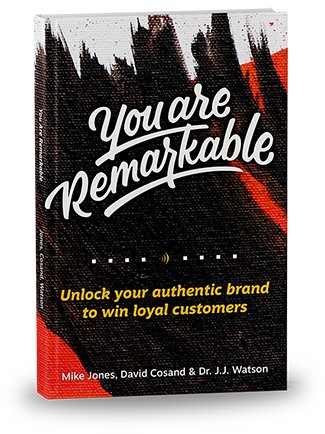One of the most difficult things a business owner can do is see their brand the same way a customer does. Our companies are our babies. We watched them grow from nothing into something. We’ve seen them overcome challenges, rise above competition, and become forces with unlimited potential. We don’t see them as they are now, but as they could be tomorrow.
Unfortunately, nobody else will see your children the way you do. People don’t want to look at your baby pictures. How do businesses better understand their clients’ perspectives and cater to their needs?
Luckily, we can take advantage of countless data analytics tools and marketing practices to allow us to optimize the experience for our target audience. We can get more business by creating interesting narratives to engage our potential customers. We can capture their information and send them regular correspondence to remind them that we exist (you know…because they went to our website that one time). This is the current state of commerce. This is the way it is “because it works.” It’s also easy to put on a report and show to an investor.
Bored yet?
The first thing we need to remember about our customer is that they probably don’t like to be thought of as a data-point.
The Long Game
In business, the goal is usually to make as much profit from as many customers as possible. Now, obviously, a business needs to make money to continue to exist. And to be clear, I’m not suggesting that we all hold hands and sing in perfect harmony as we usher in this new utopian society where businesses put aside profits for a better world.
Rather, I’m suggesting that the current “customer = data point” model is so well established that there are opportunities to gain a competitive advantage.
Two Brave New Worlds
When I picture the future of commerce, I see two different experiences:
Scenario 1: I see a slightly older, fatter, balder Ben. I’m talking to my iPhone, Amazon Echo, or maybe the chip embedded at the base of my skull. I ask for a taco. Within a reasonable amount of time and for a reasonable price, a taco appears. I don’t really care how it happens; I’m too busy enjoying my taco.
Scenario 2: In the other scenario, I walk down to my local artisanal tacoporium on a cool autumn afternoon. I warmly greet Tobias with a handshake and compliment him on how well behaved his hover-dog is. He scans the decision-chip in my skull, I blink three times to confirm the transaction, and he heads back to the kitchen to make the best homemade tacos in the entire Republic of New Arizona. He knows exactly the way I like them.
I pay the exact same amount for this one as I do in the first scenario and get my money’s worth in both. I’m not really buying tacos. In the first scenario I’m buying convenience, and in the second I’m buying an experience.
When most people imagine the future, they pick a new trend and take it as far as they can. They look at self-driving cars and think that nobody will drive cars in the future. The only problem is that driving cars is fun! The future will have on-demand options we can only dream of now, but it will also have other extremes.
Human experiences have value and they always will.
The future I see isn’t going forward, it’s going in all directions.
The Catch
The dilemma for businesses is that some people want a journey, but others don’t. Reactive marketing data will tell you whether a hand-holding approach is more effective than a direct approach, but it ignores one group to cater to another. Some people don’t care about your business. Some may even despise it but have no other options.
For instance, I was at Taco Bell the other day eating something called a Quesalupa — regretting the decisions in my life that had led me to that moment. I started looking around and wondered who else felt the same way, but nobody would make eye-contact with me.
I wonder if Taco Bell’s CMO knows how many “fan” relationships are based solely on habitual contempt and regret. We are the silent majority. We don’t fill out surveys or subscribe to their email lists. We eat at Taco Bell because it’s two minutes away and the line is short.
We live in a world where we walk into stores and all the employees look up and yell “Hello!” at us in unison because those weirdos who fill out surveys seem to like it. I have a negative reaction when a company sends me a non-transactional email. I don’t want to give someone my phone number to buy dog food.
Most companies will probably blow off the silent majority because it’s really hard to make them happy. They focus on the most profitable and data-heavy demographic and optimize for them. But what if you have a business selling a Caller ID blocking app? I’m guessing your best customers are people who don’t want to be tracked.
The Long Tail
If you’ve read the book The Long Tail by Chris Anderson, or are familiar with the term, you know that you don’t have to sell the most popular items in order to make money. There is a wide spectrum in which you can position your business to stay competitive. This concept doesn’t only apply to the things that you sell, it can also apply to the way that you sell them. In other words, sell the experience you are providing.
Proactive vs Reactive
The answer to all this is simple. Provide each customer with exactly the experience they want and nothing more.
One trend I predict for the near future is the dismantling of our country’s 800 pound gorillas. Car dealerships have a pretty strong foothold and won’t go down without a fight, but any company who can break through those to provide a more customer-focused experience shouldn’t have too much trouble capturing our hearts. It’s exciting to see what Tesla is doing. I’ll be watching them closely.
On-demand services like Uber, Lyft, DoorDash, and TaskRabbit are also a pretty interesting approach. Amazon Dash Buttons and other IoT products will continue to grow. Again, the problem with all of these is that they cater to one type of experience. Is it possible for one company to create customizable experiences?
In my research, I found an interesting software tool that is attempting this strategy. Demandware is a software platform for traditional retailers to offer a “unified customer experience”. Looks like they have some pretty impressive brands on board.
I also like the slogan for Esurance. “Technology when you want it, people when you don’t.” I generally like being able to do something on my own, but if I need a little help, I want to be able to summon a real person immediately.
Perhaps the best example I’ve seen is a new website called http://shoppingquizzes.com/. Rather than relying on an individual user’s historical behavior or aggregated user data to recommend products, they do something revolutionary. They ask.
They work with retailers to build a short quiz which asks qualifying questions for product recommendations. This not only allows for more targeted product marketing, it also creates a more engaging and empowering experience for the user.
Be Inclusive
It’s important to understand your best customers. It only makes sense to start with the group that you have the most information on. But don’t neglect the rest. Try to understand the true impact on the other guys each time you optimize for your favorite kid. Look for opportunities to give to one group without taking from others. Consider that not all of your customers want a narrative, journey, or experience with you. Some may endure a great deal of stress to do business with you.
Let them know that it’s ok. You thought of them too.
In a world as data-heavy and formulaic as ours, this might be your biggest opportunity to stand out above the crowd. If you need help figuring out your customer experience, my team at Resound would love to help!




